The UNMC Department of Anesthesiology is dedicated to delivering exceptional patient care – sometimes to exceptional patients in unexpected places.
A partnership between UNMC and the Henry Doorly Zoo and Aquarium brings preventive, specialized health care – such as echocardiograms – to gorillas like Kijito and Muke.
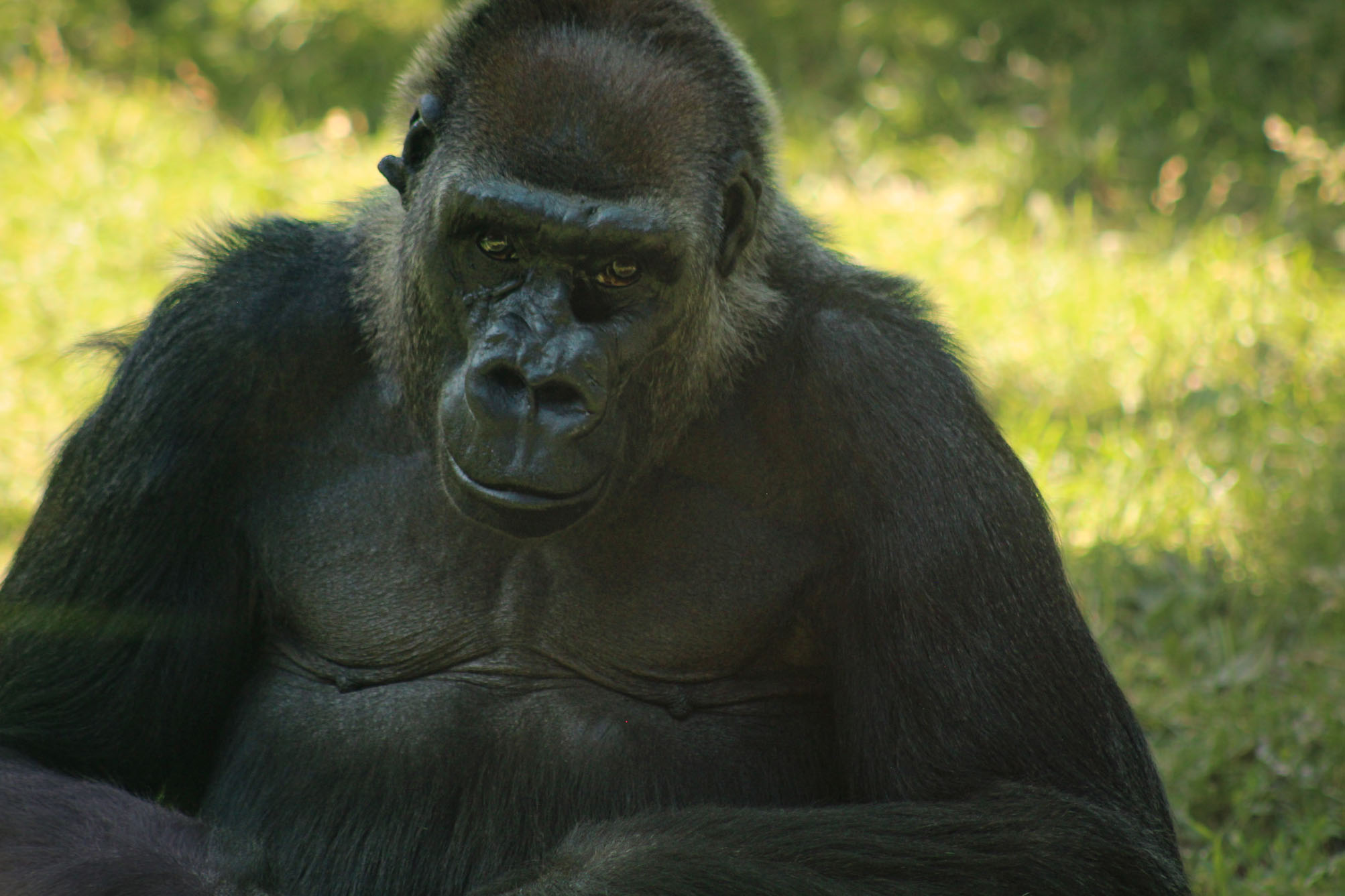
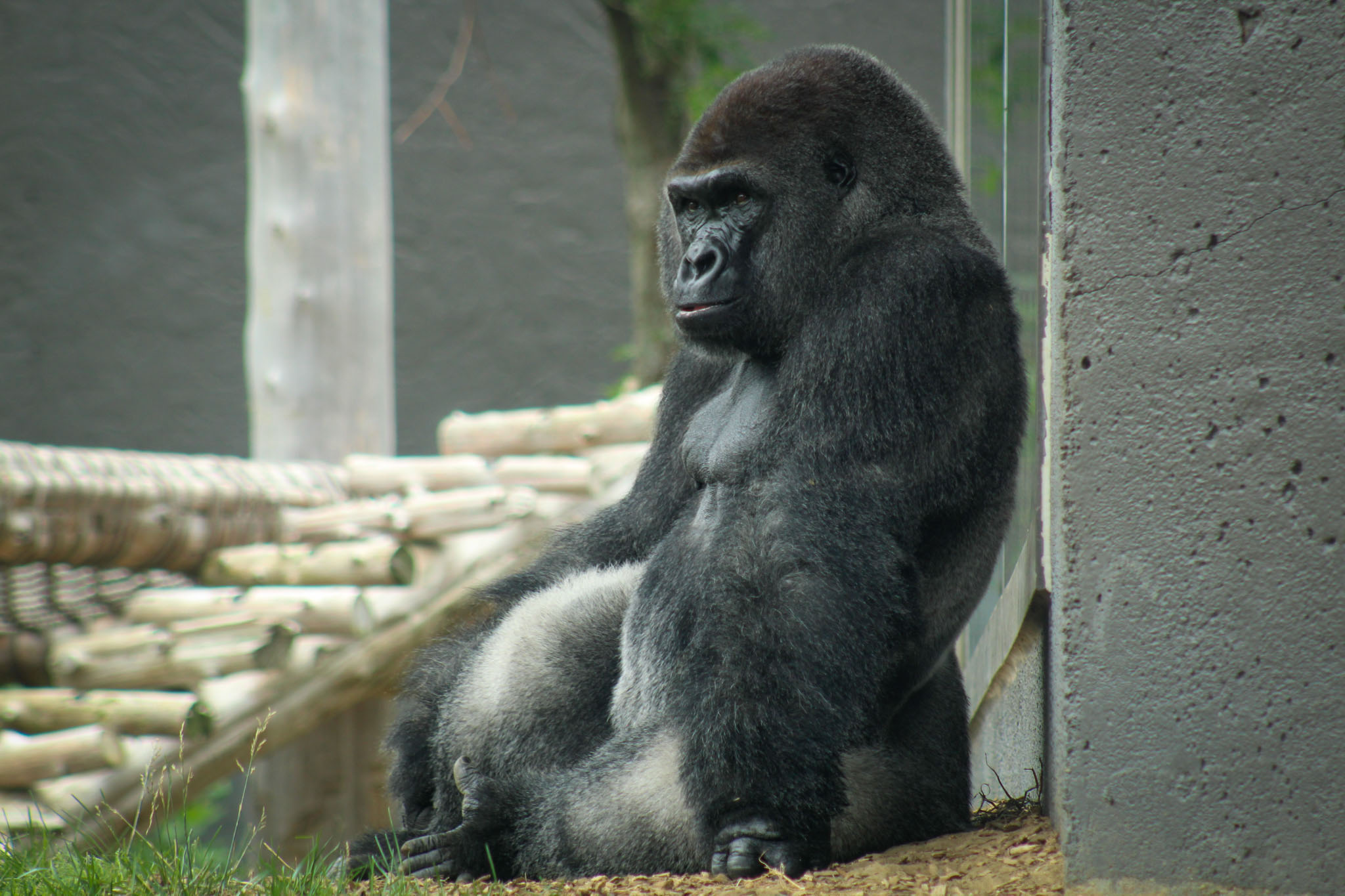
Muke (at left), a 208-pound female gorilla, was given an echocardiogram at the zoo in April. Kijito, a 383-pound male, received the same procedure in May.
Walker Thomas, assistant professor and cardiac sonographer with the UNMC Department of Anesthesiology, walks down a concrete ramp pushing a portable ultrasound machine, passing by barrels full of tree limbs.
He stops in front of the procedure room. There, his patient is laid out on a large gurney, surrounded by an even larger team of care providers.
Thomas is given a thumbs-up through a set of reinforced steel bars from a colleague inside the room and he enters, moving quietly. He is told the patient is stable under anesthesia, having been safely anesthetized prior to his arrival.
The patient? A 29-year-old, 383-pound, male western lowland gorilla named Kijito. (This is Walker’s second gorilla echocardiogram in about a month – earlier, he performed the procedure on Muke, a 208-pound female.)
The Procedure
The UNMC Department of Anesthesiology is dedicated to delivering exceptional patient care – and sometimes, that means providing services in unexpected places.
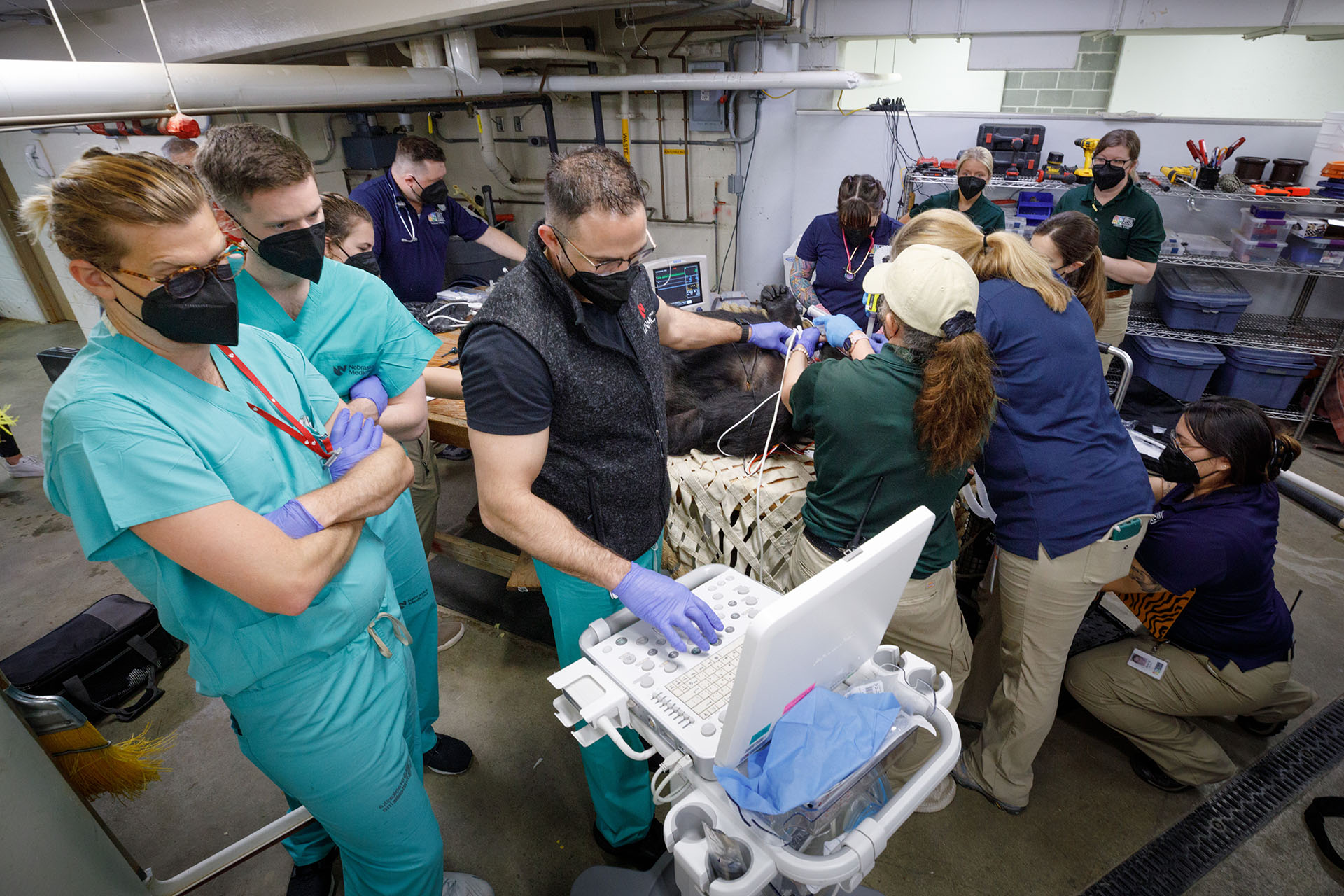
Critical care anesthesiology fellow Scott Breeden, DO, left, and adult cardiothoracic anesthesiology fellow Kevin McKillion, DO, second from left, were on hand for Muke’s echocardiogram. After the exam, Thomas gave each of the fellows an opportunity to scan Muke before she was moved to a recovery area. “This is an awesome opportunity and definitely a unique experience for the fellowship program,” Dr. McKillion said following Muke’s procedure.
Today, Thomas is in procedure room within the Hubbard Gorilla Valley exhibit, yet separated from the rest of the gorilla troops.
Thomas has performed echocardiograms for the gorilla population at Omaha’s Henry Doorly Zoo and Aquarium since 2010.
Today, his patient is Kijito, who arrived at Omaha’s Henry Doorly Zoo and Aquarium in 1995. The animal care team describes Kijito as vocal and engaging, adding that he likes to spend time watching the people who come through the gorilla exhibit, sometimes coming up close to the glass to interact.
Taylor Yaw, DVM, CertAqv, Dipl. ACZM, Dipl. ABVP, director of animal health at the Henry Doorly Zoo and Aquarium, said nearly all animal medical care is provided by on-site veterinarians, but some preventive health care requires specialized equipment and expertise.
“We’ve partnered with UNMC for a number of years in order to get the best care for our patients.”
Mohanad Shukry, MD, PhD, interim chair of the UNMC Department of Anesthesiology, said the department is proud to foster interdisciplinary collaborations. “These are definitely not our typical patients,” he said. "This kind of partnership – between one of the world's best academic medical centers and one of the world's best zoos – benefits our trainees and the community as a whole. We are always ready to lend our expert hand.”
The Partnership
Kijito remains intimidating even though safely immobilized, his only movement the gentle rise and fall of his massive chest. His powerful muscles and sheer size are illustrated by the contrast of his massive hand cradled in a care team member’s much smaller hand.
The Preparation
“It’s a unique challenge when the gorillas are awake, even though the animal care team does an excellent job of training the gorillas,” Thomas said. “We prefer the patient is under general anesthesia because it gives us more opportunities – dental exam, blood draws, EKGs, in addition to the echocardiogram.”
The echocardiogram data specifically is sent to the Great Ape Heart Project, a group of subject matter experts that manages research efforts involving cardiovascular disease in gorillas and other great apes. Heart disease is common in great apes, particularly in male gorillas.
The Project
Dr. Yaw said being a part of the Great Ape Heart Project, in conjunction with the relationships built between the animal care team and the animals, benefits the 11 gorillas living at Omaha’s Henry Doorly Zoo and Aquarium’s Hubbard Gorilla Valley through treatment plan development, contributing to the species data set kept by the heart project.
Dr. Yaw said that although they are able to perform echocardiograms on some of the great apes when awake, the procedures tend not to be as diagnostic. “The animals are trained for hand injections, so it’s a lot less stress on us and on them. Once injected, it normally takes about 10 to 15 for the sedatives to take effect, so we can safely get those echocardiograms performed,” he said.
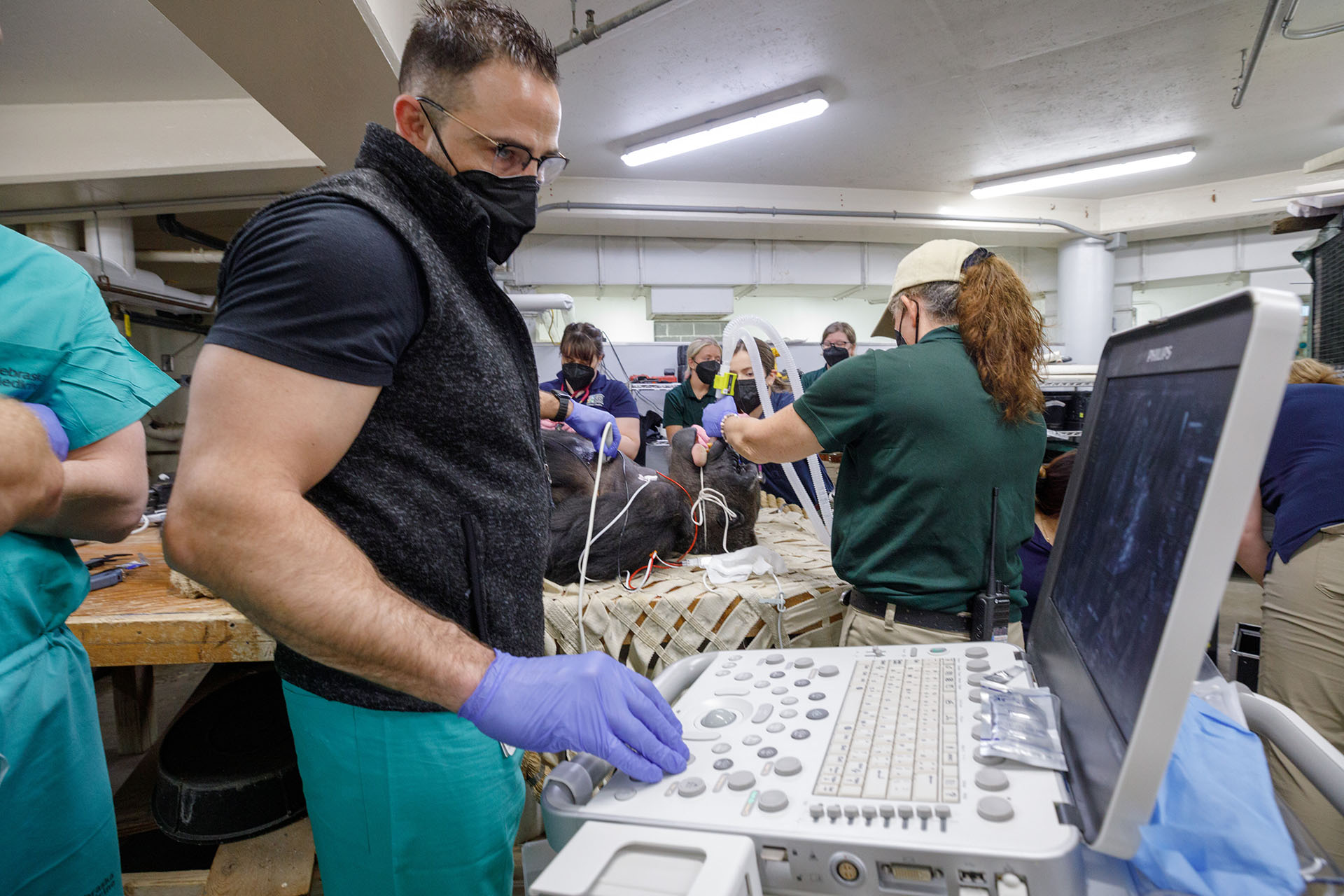
Cardiac sonographer Walker Thomas examines Muke’s echocardiogram.
As Kijito remains still and the rhythmic “whoosh-whoosh-whoosh” of his heartbeat fills the air, members of both the animal care team and animal health team are in constant motion – taking blood, checking monitors, conducting a physical exam – from teeth to toes – to assess overall health.
Thomas moves the probe around Kijito’s massive chest, pointing out the image on the screen to Dr. Yaw. “Today we’re doing a complete echocardiogram of a male gorilla, looking at all aspects of his heart with 2D echo, colorflow and doppler,” he explains. “That way, we can evaluate his chambers, his blood flow and all hemodynamics, making sure everything is working the way it should and there are no changes from last time.”
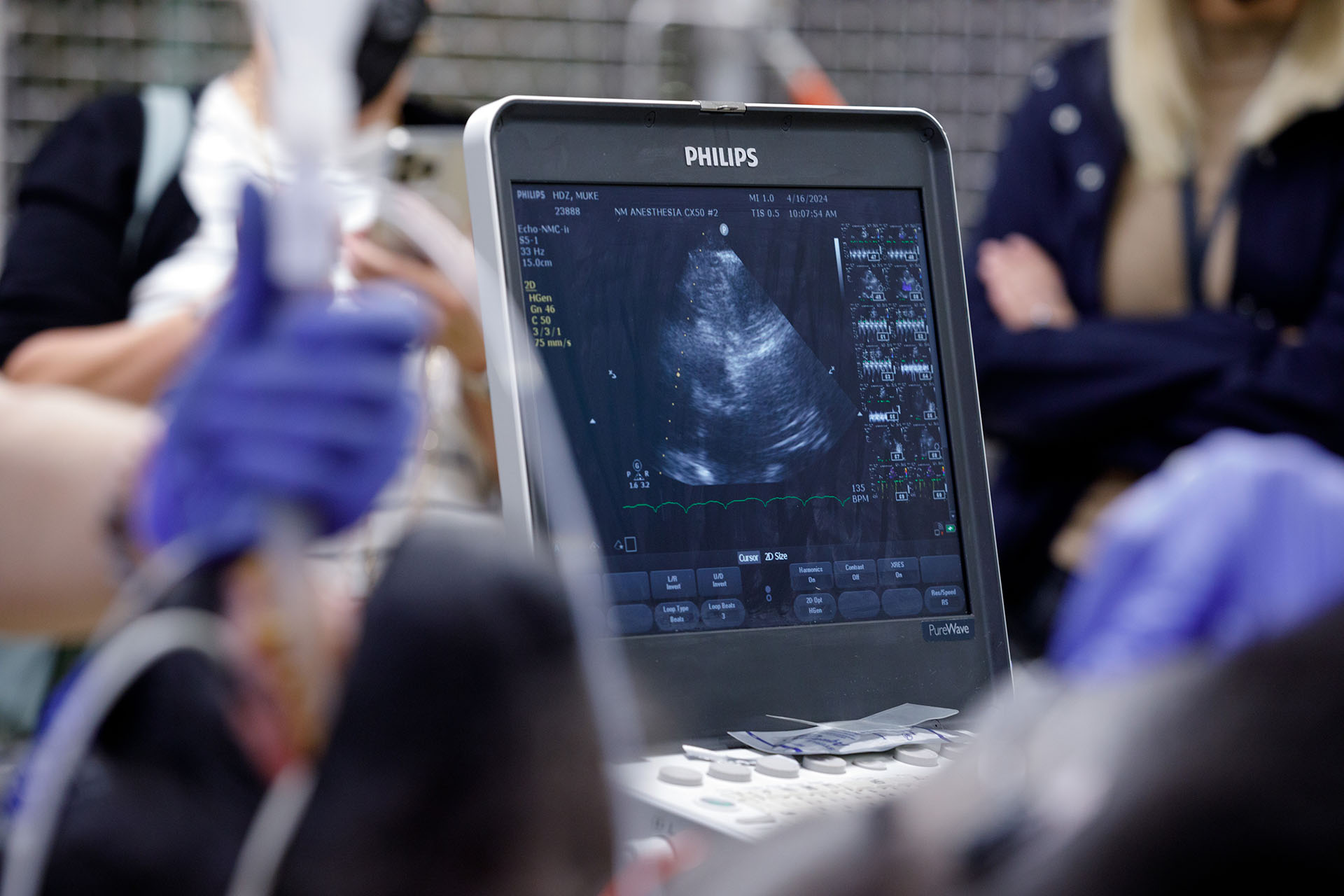
Cardiac sonographer Walker Thomas notes that there are many similarities between the readouts for Muke’s echocardiogram and a human patient’s.
According to Thomas, the similarities between gorilla and human echocardiograms are indistinguishable, and it is impossible to tell just by looking at an echocardiogram if the heart is from a gorilla or human.
“If you look at the heart with ultrasound, it looks almost exactly the same,” he says. “The orientation is the same; it sits about the same place in the chest, and the echocardiographic windows are also in the same place, so it makes it fairly convenient to provide echos for these gorillas.”
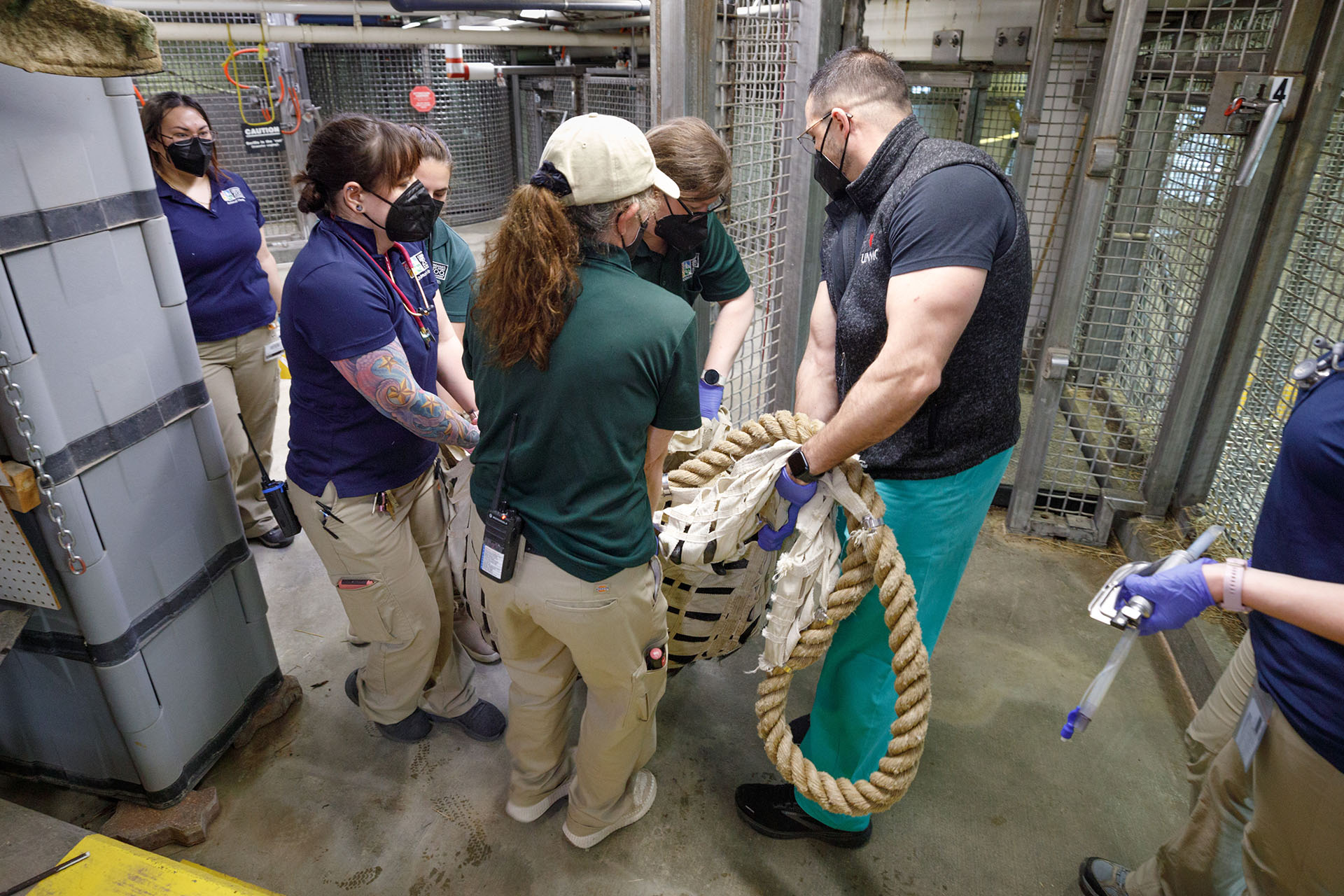
Muke, who is the oldest gorilla at the Zoo, will be reunited with her family troop after resting quietly for the better part of a day.
As the exam ends, the flurry of activity surrounding Kijito starts to slow down. Thomas carefully wipes the transponder gel from his chest before he is recovered from anesthesia. Kijito is gently transferred to a recovery area – a feat that takes about a half-dozen people hauling a heavy canvas netting.
While Kijito is recovering, the massive patient will be monitored by his zoo team as he rests comfortably away from his bachelor troop for the rest of the afternoon.
The Privilege
Thomas is proud to be a part of the collaboration between UNMC and Omaha’s Henry Doorly Zoo and Aquarium. In addition to providing a service, he says, he has learned a great deal from the animal health team.
“It’s an honor and a privilege to have a part in maintaining the health of these animals,” Thomas says.
Still, he admits, “I never thought I’d be giving echos to gorillas.”
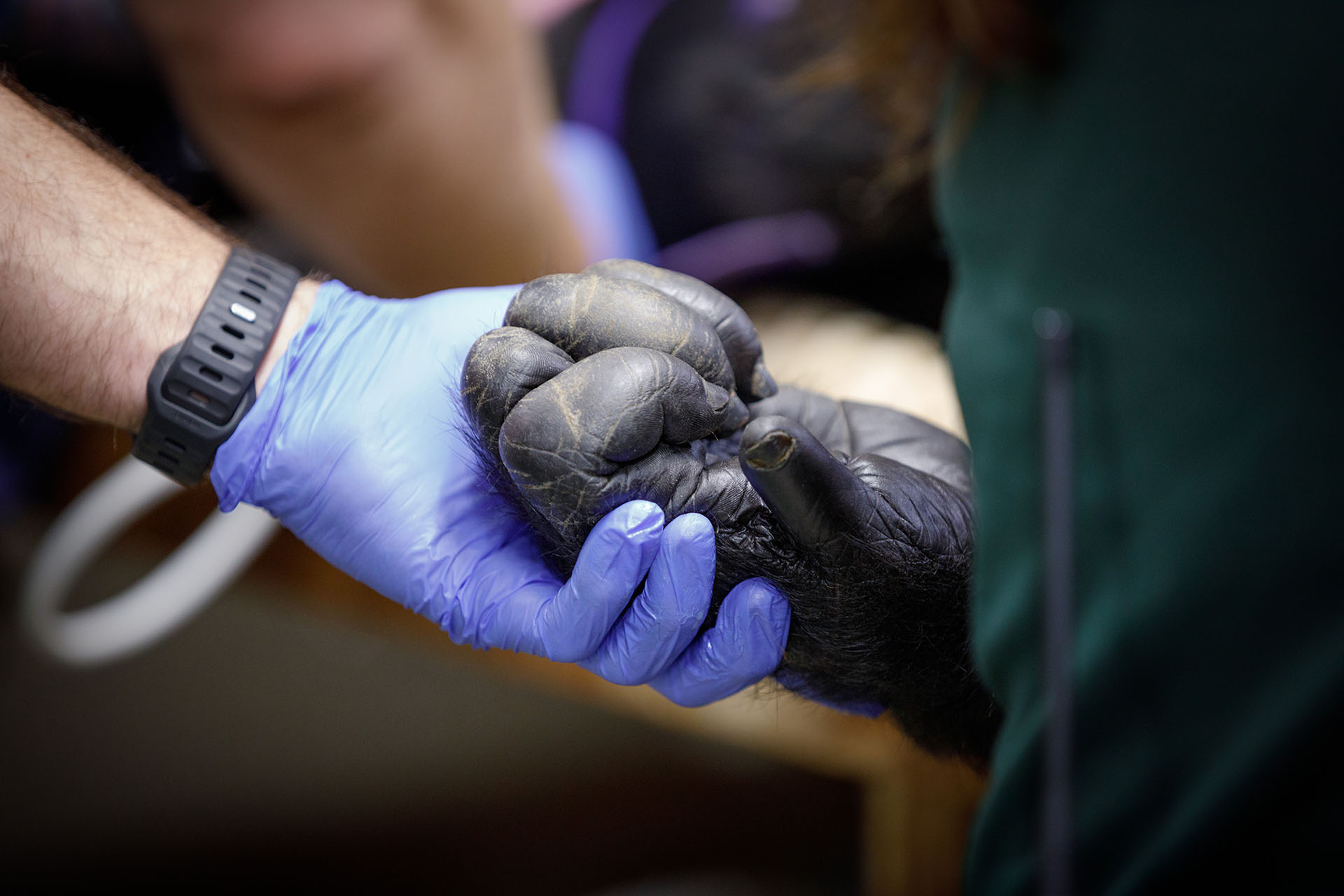
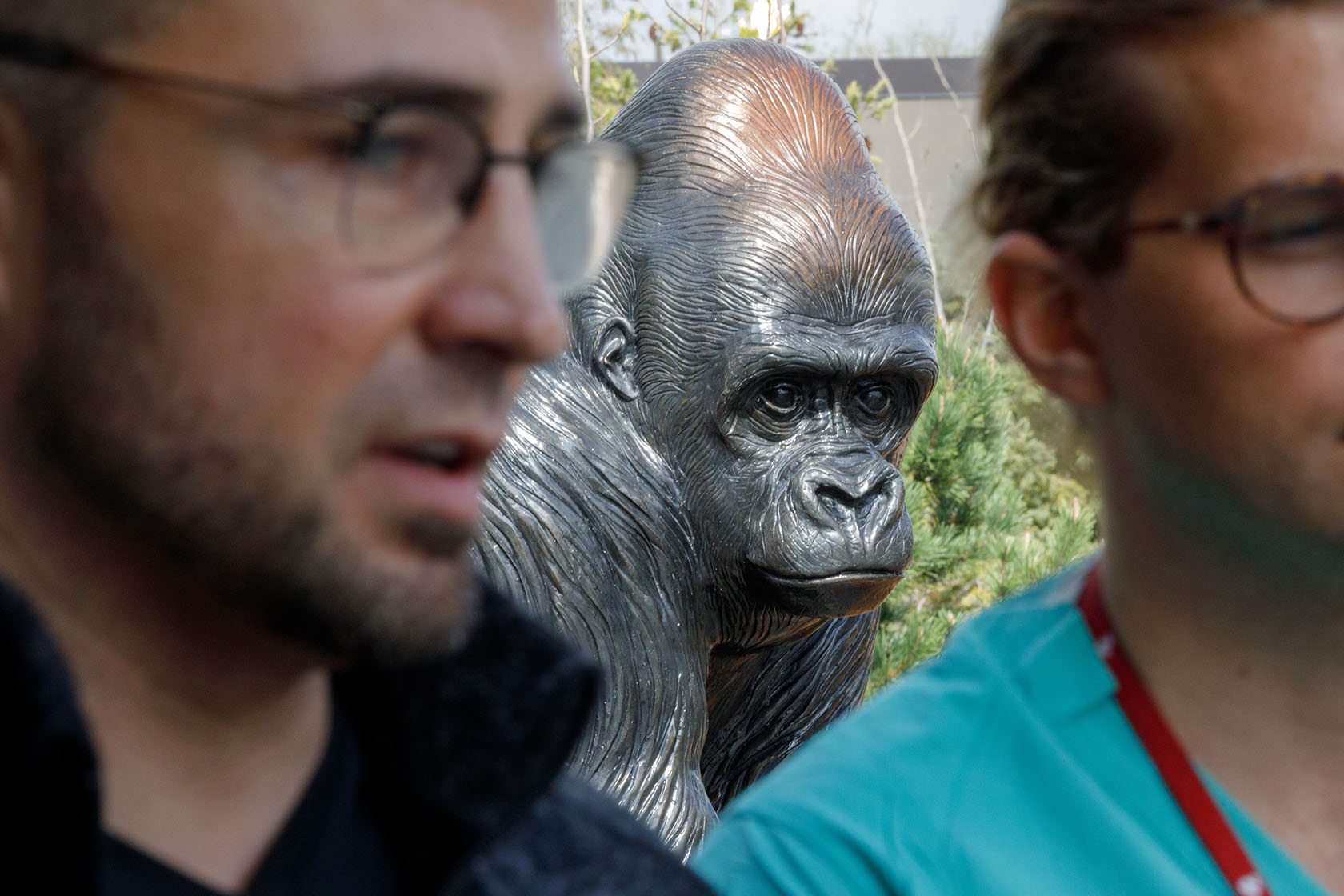
All I can say is “how cool is this!” Congrats to the UNMC team and the Henry Doorly Zoo and Aquarium Great Ape team. Kijito and Muke, you are in good hands.
This is AMAZING! So much fun to read about!
What an awesome experience to care for these intimidating and beautiful animals.
Wow! Thank you for sharing this story. It’s heartwarming to see the respect and outstanding quality of care given to these utterly fascinating anthropoids.